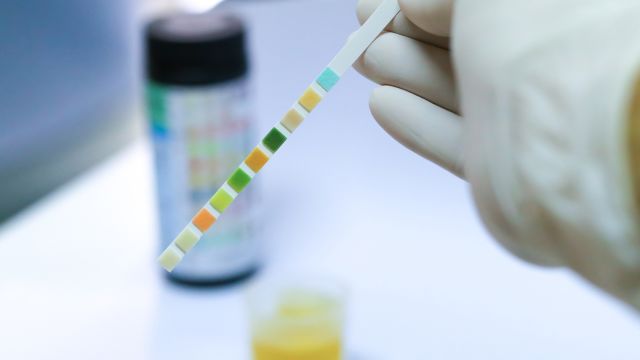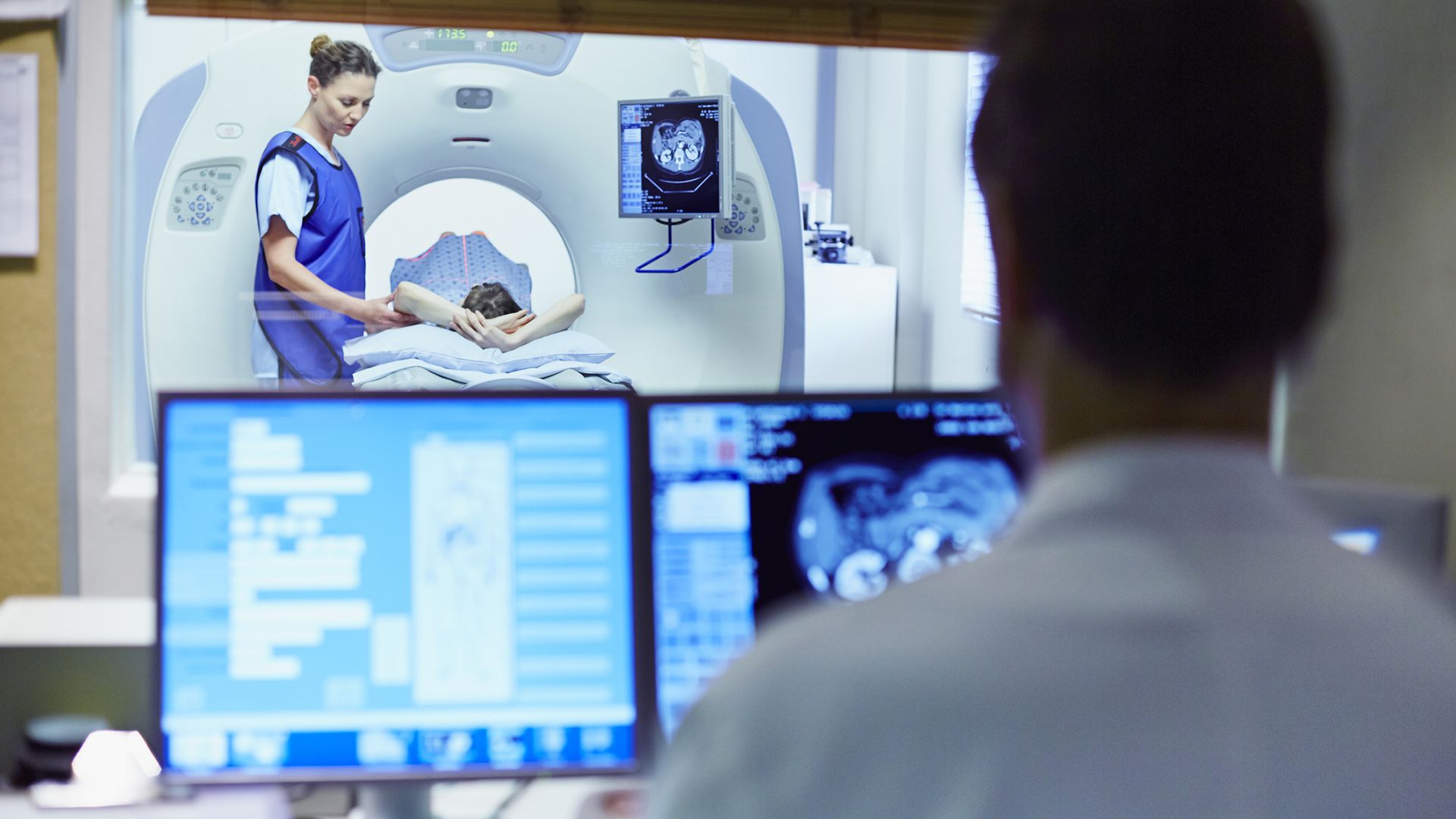You may not hear much about bladder cancer, making it seem rare, but it’s actually the sixth most common type of cancer in the US. According to the American Cancer Society, about 79,000 new cases were diagnosed in 2017—roughly 60,500 men and 18,500 women—meaning men are three to four times more likely to develop it.
Learn the essential facts about bladder cancer, including common risk factors, symptoms to watch for, how it’s diagnosed and treated, as well as strategies to prevent recurrence.
Risk factors you can control
There are several factors that can increase your odds of developing this type of cancer, including some that you may be able to change. “The biggest is smoking,” says Nadeem Rahman, MD, a urologist with Saint Agnes Medical Center in Fresno, California. “Many people think of smoking as only causing lung cancer or lung problems, but it’s by far the biggest risk factor for bladder cancer and cancer of the kidney lining and ureter.”
The bladder doesn’t seem like a likely repository for toxins from smoking, so what’s the connection? "Some of the toxins that are made by the smoke actually get excreted in the urinary tract,” he says. “That's why it can cause bladder cancer.”
A simple way to reduce your risk is by drinking enough water each day. According to the American Cancer Society, people who drink plenty of water and other fluids have lower rates of bladder cancer. The theory is that staying hydrated means more bathroom breaks, which can flush chemicals from your bladder.
Environmental exposures
While it may not always be possible to change jobs, working in industries that bring you in contact with cancer-causing chemicals can up your risk. “There are certain types of dyes found in paints,” Rahman explains. Inhalation of these chemicals, called aromatic amines, can predispose you to bladder cancer. Workers who face higher risks include:
- Painters
- Machinists
- Printers
- Hairdressers (if there is heavy exposure to hair dyes)
- Truck drivers (from exposure to diesel fumes)
Risk factors you can’t control
Although it’s not a given, these are some of the traits that may increase your odds of developing bladder cancer.
- Age. As with many other diseases, bladder cancer risk increases as the calendar years pass. Approximately 9 out of 10 people who develop bladder cancer are over age 55.
- Gender. Men get it three times as often, although the reasons aren’t clear why. “The epidemiological studies haven’t really differentiated what, in particular, men do compared to what women do that puts them at higher risk,” says Rahman.
- Family history and genetics. Family history can play a role, sometimes due to inherited genes that make it more difficult for the body to break down toxins. In other cases, it’s because family members have been exposed to the same carcinogens, such as cigarette smoke.
- Ethnicity. Whites tend to develop bladder cancer at about twice the rate of African Americans and Hispanics, while Asian Americans and Native Americans’ rates are slightly lower.
- History of bladder or other urothelial cancer. According to Rahman, bladder cancer has a high recurrence rate. “It’s as high as 70 percent for even stage 1 cancers,” he says. “We don’t know what it is about bladder cancer that causes the recurrence rate to be so high, but again, all the risk factors, the hereditary aspect of it, the environmental aspect of it, all contribute.”
- Chronic bladder infections. According to the American Cancer Society, frequent urinary infections, kidney stones and other sources of bladder irritation have been associated with bladder cancer, although it’s not determined that they are the actual cause.
Bladder cancer signs and screenings
Symptoms may include trouble urinating, having to urinate more frequently than usual and pain while urinating. But one of the most common—and perhaps alarming—symptoms is blood in the urine. Your healthcare provider will likely take the following steps if you experience any of these symptoms:
- Urinalysis: This involves checking for blood in the urine under a microscope.
- Cystoscopy: “A flexible camera goes into the urinary tract to the urethra,” Rahman says. “We’re looking for polyps or tumors.”
- X-ray, CAT scan, MRI or ultrasound: Since blood in the urine is a symptom of several other medical conditions, your doctor will do one or more of these screenings on the bladder and kidneys to rule out kidney stones or cancer of the kidney.
Different types of bladder cancer
Bladder cancer forms when cells start to grow uncontrollably in the urinary bladder, developing cancer cells that can form a tumor. “Most are transitional cell cancer, also called urothelial carcinoma,” says Rahman. “These are cancers of the lining of the bladder, the lining of the kidney and the lining of the ureter.”
Other types include squamous cell cancer of the bladder and adenocarcinoma of the bladder, but Rahman says these aren’t as common.
Bladder cancer stages and treatment
There are four stages of bladder cancer, and the stage determines the treatment.
Stage 1: Polyps in the bladder lining that haven’t invaded into the muscles; they are removed surgically. Rahman explains that because of bladder cancer’s high recurrence rate, a patient with stage 1 cancer is observed every three to four months with cystoscopies, rechecking for polyps. The kidney is often screened as well.
Stage 2: Bladder lesions have grown into, or through, other layers of the muscle wall. Once that happens, treatment becomes more aggressive. “Oftentimes, these higher stages are treated with chemotherapy and radiation therapy, if they want to try to save the bladder,” says Rahman.
Surgery for removal of the bladder is a radical cystectomy; it may be followed by bladder reconstruction that essentially creates a new bladder. “It’s called a neobladder," he explains. "You take a segment of the small intestine and make a little pouch out of it. You plug the ureter tubes into that and hook it back to the sphincter muscle. Then you can start urinating normally again.”
In order to be a candidate for neobladder reconstruction, your liver and kidneys must function normally and you can’t have cancer of the urethra. If you’re not a candidate for reconstruction, an alternative is a urostomy, also called an ileal conduit. This is a procedure in which urine drains into an external pouch through an opening on the belly called a stoma. Urination cannot be controlled, and the pouch must be drained throughout the day.
Another similar approach is continent diversion, where a valve is placed in the pouch, allowing the patient to have control over urine drainage and removing the need of an external bag. The bladder is either removed or bypassed with either of these procedures.
Stage 3: The cancer grows into the muscle and fat around the bladder. Standard treatment is removing the bladder and lymph nodes. Typically, chemotherapy is given before and after surgery to help shrink the tumor and kill cancer cells.
Stage 4: Cancer grows through the fat into your lymph nodes or any other organs, such as your liver or lungs. “Treatment is chemotherapy along with local control, with or without removal of the bladder,” says Rahman. Radiation may also be used along with, or instead of, chemotherapy.
Preventing recurrence
If you smoke, quitting is a must. In terms of other lifestyle changes, “there isn’t a specific diet to follow, but eating cleaner, healthier living and avoiding processed foods will always be beneficial to your health,” Rahman says. He also recommends exercising three to five times a week.
For treatment to help prevent cancer recurrence there are a few options. With early stage cancers, one of two types of intravesical therapy may be used, where drugs are put directly into the bladder via a catheter. One type is chemotherapy, where the bladder lining is flushed with chemo drugs.
The other is immunotherapy, which flushes the bladder with bacteria called BCG. “Bladder cancer has been one of the few things we know that responds well to immunotherapy,” Rahman says. “So sometimes when we try to rev up our body’s immune system, it can help prevent the recurrences.”
With later stage cancers, an option is systemic chemotherapy, in which a chemo drug is given as a pill or injected into the blood stream. This is typically done after surgery or radiation therapy, with the goal being to kill off any remaining cancer cells. According to the American Cancer Society, this may also lower the chance of the cancer recurring.




